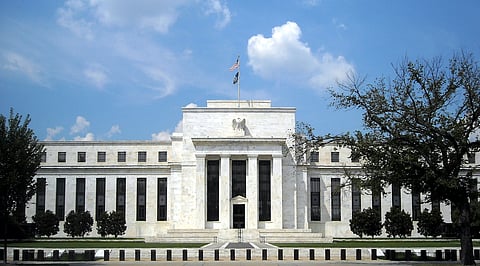The Marriner S. Eccles Federal Reserve Board Building (commonly known as the Eccles Building or Federal Reserve Building) located at 20th Street & Constitution Avenue, NW in the Foggy Bottom neighborhood of Washington, D.C.
Locked
Financial Times perspective: It’s not all about a Fed pivot
Investors should resist a knee-jerk move to speculative assets based solely on the US Fed Reserve potentially reversing course.

